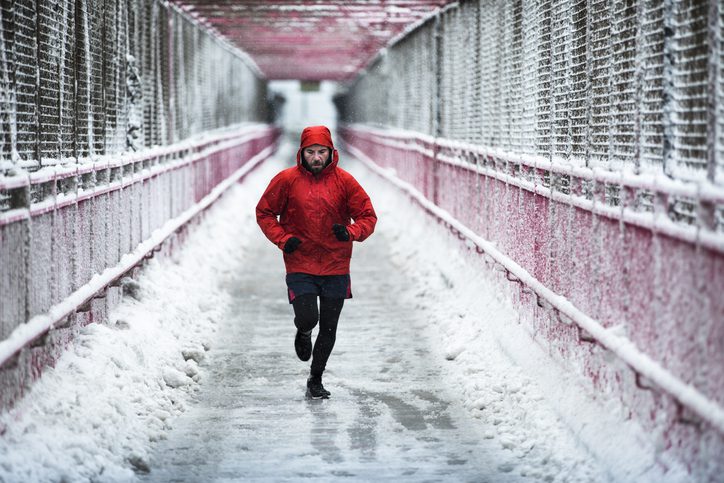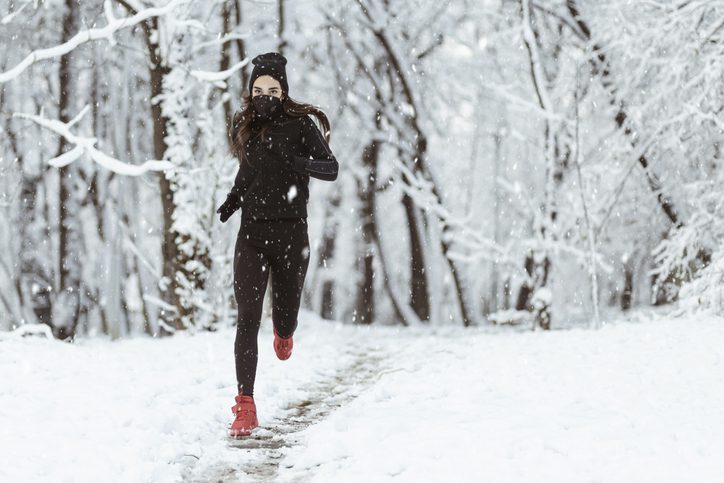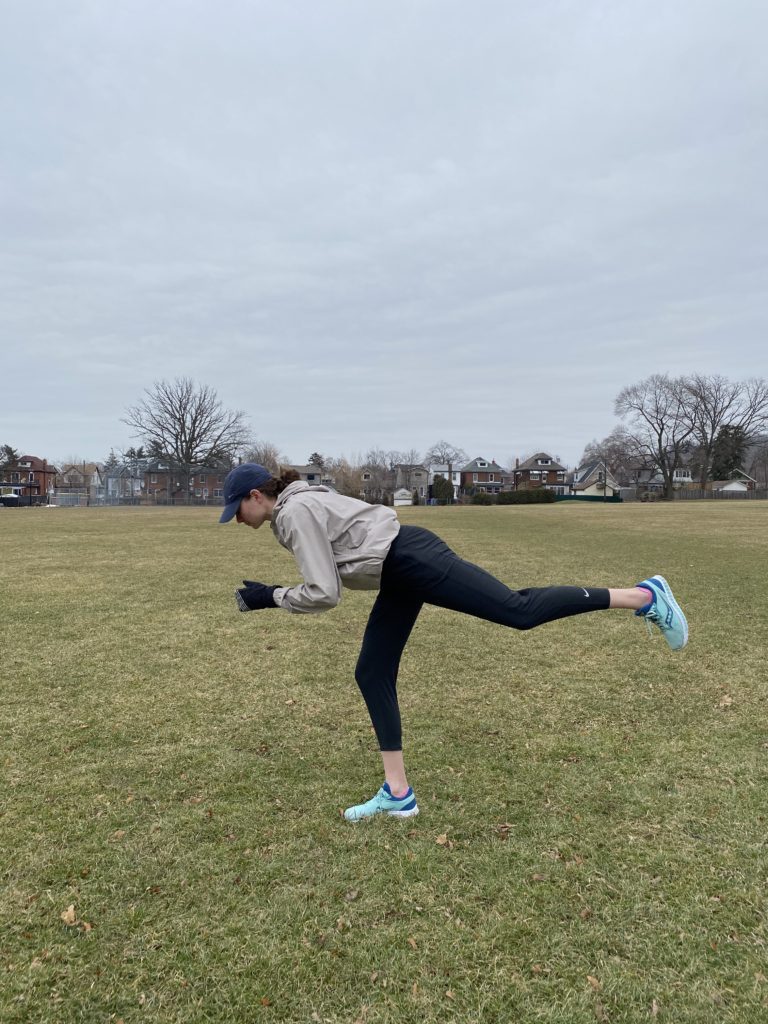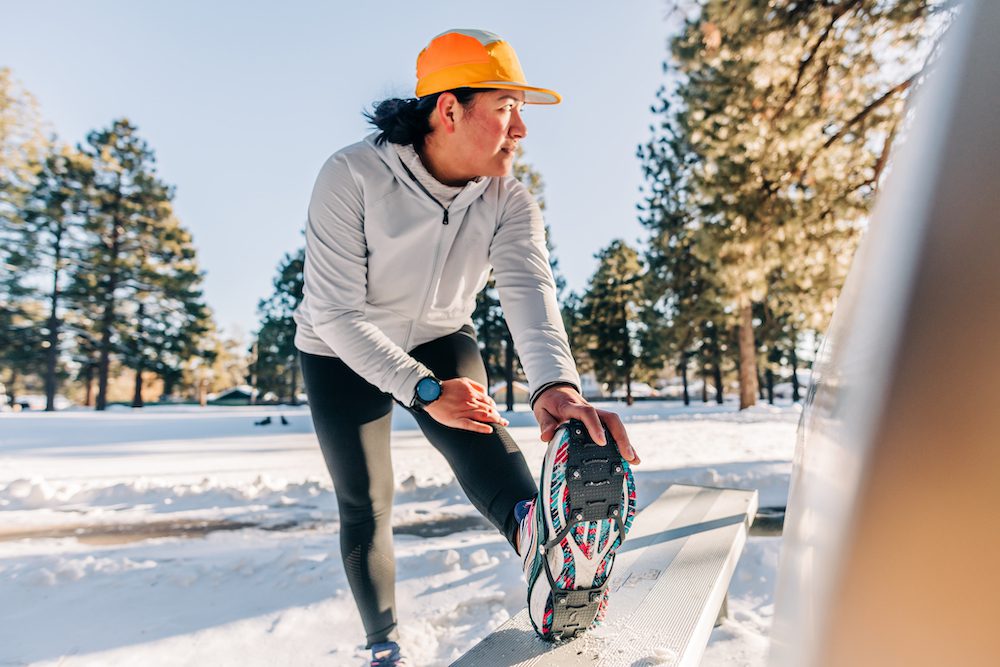How runners can adapt their stride for winter conditions
Should you change your gait on snowy and icy ground? Kinesiologist Tanner Kowel offers advice on how to safely and comfortably tackle wintry conditions

Should you adjust your stride when the streets are covered in snow and ice? That is the question many runners have been asking over the past several weeks, as communities across the country have been hit with severe winter weather. Tanner Kowal, a kinesiologist and strength and conditioning coach at Connect Physiotherapy and Exercise in Edmonton, sat down with Canadian Running to explain how runners should adapt to wintry conditions.
Should you change your stride when running in the snow and ice?
Kowal points out that while there is limited research regarding biomechanical adjustments for running in the snow, runners should focus on making the necessary changes to feel comfortable and safe. “This might mean running slower, with a shorter stride length and a wider stride width, to alleviate concerns about instability on snow and ice,” he says.

Most runners seem to do this naturally, he says, particularly more experienced runners. Kowal highlights research showing that most runners tend to self-select the best stride for themselves, and the more you run, the better you get at selecting the stride that is optimal for your body. “So while research on running in snow is sparse, evidence suggests that experienced runners intuitively know how to adjust their stride for different scenarios,” he says.
How does your stride typically change in the snow and ice?
Kowal says most runners tend to take more steps, but spend less time in the air with each step, and generally have less forceful landings. Runners will also often widen their stride when encountering unstable terrain.

Again, he says runners tend to make these changes naturally, without any coaching or even much conscious thought. “Every runner will also make slightly different adjustments to their gait,” he says.
How can runners prepare for winter running?
Winter may have already arrived, but it’s not too late to start winter-proofing your body if you haven’t already. First, Kowal suggests starting with short runs in moderate conditions and gradually progressing to more challenging winter environments. For example, try running on roads and sidewalks before venturing into the trails. “This way, you can feel out what changes you think need to be made to your running mechanics to feel safe before getting stuck halfway through a long run in a blizzard,” he says.

Strength training is also important, with a particular focus on ankle strengthening and balance. This is because when you run on uneven or slippery surfaces, the muscles around your ankle joint to stiffen to protect the joint from injuries. This can lead to sore calves and other issues if you’re unprepared.
“Dynamic balance training, involving single-leg exercises that disrupt balance and require stability maintenance, is an effective way to strengthen the ankles for winter running,” says Kowal. “General lower-body strength training before winter can help protect against injuries resulting from any technique changes we do make while running in snow. It is also well-researched that strength training can reduce the severity and improve recovery outcomes in the unfortunate event that we slip and fall on the ice.”

Nothing new, only tried and true
Kowal’s last piece of advice is to avoid adventuring onto a new route after a fresh snowfall. “Running on fresh snow can be risky if you don’t know what’s underneath, such as ice, tree roots or potholes,” he says. A good pair of winter running shoes can also go a long way to improving your stability in slippery conditions, and if it’s cold enough that you’re running on ice, get a pair of traction devices that fit over your running shoes (Yaktrax and Kahtoola both make excellent products).
Ultimately, most runners intuitively know how to adjust when encountering wintry conditions. The most important thing to remember is to adjust your expectations and always opt for safety over performance. Slow down, and when the conditions are severe with low visibility, consider taking your run indoors.


